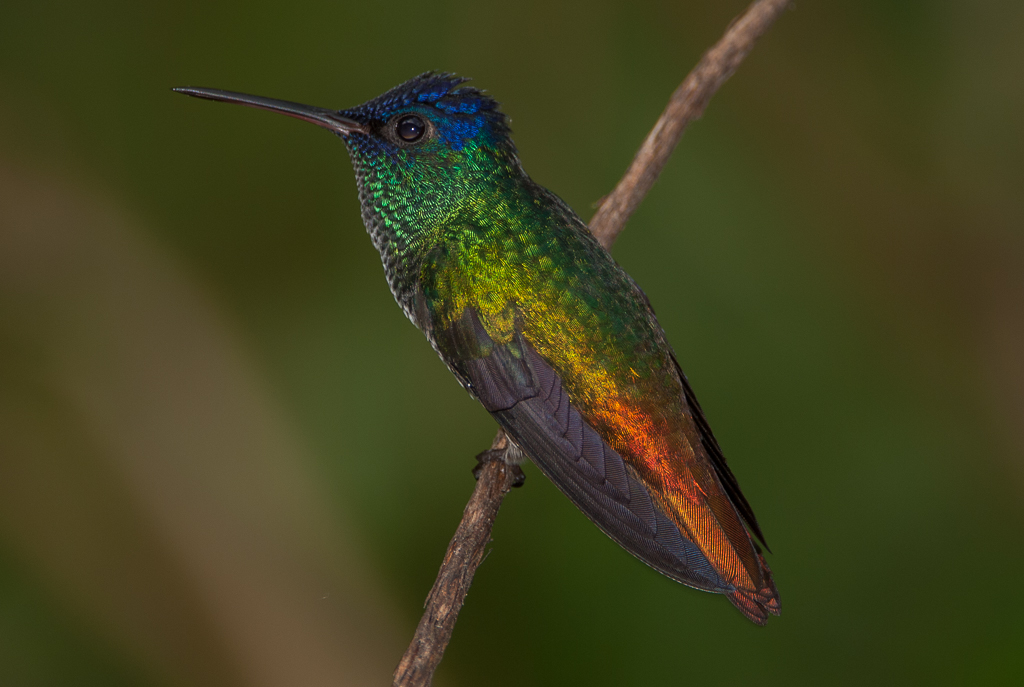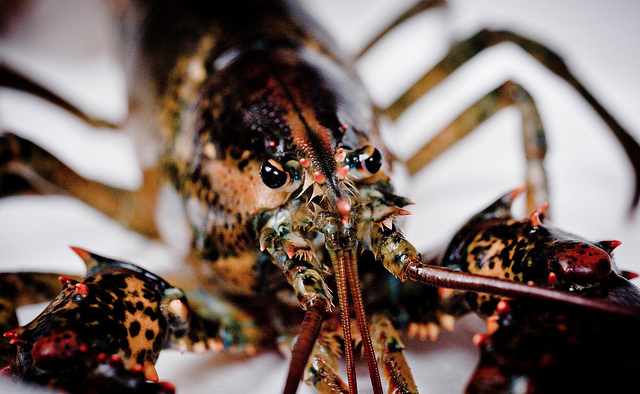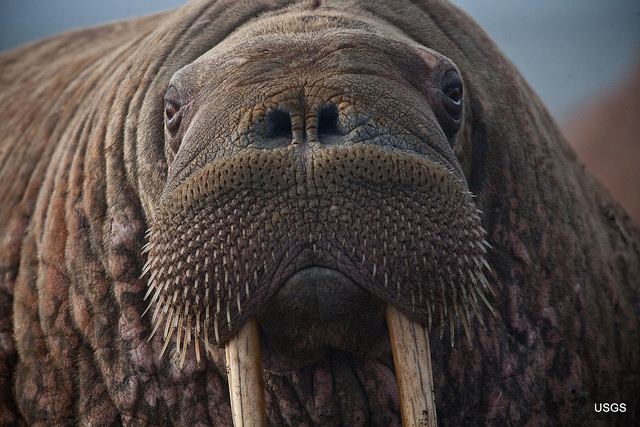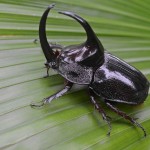#speciesoftheweek: The luscious lobster
You may know our #speciesoftheweek as a highly priced delicacy for the rich and famous. But that’s not the reason for us to chose the lobster for our hit-list of animals. There’s a lot more to the crustacean than meets the eye. In fact, lobsters are marvelous and in some of their habits quite strange creatures. They tend to do things we probably won’t like to see.
1. Lobsters are closely related to shrimp and crabs.
2. Lobsters are found in all of the world’s oceans, as well as brackish environments and freshwater.
3. Lobsters have poor eyesight but very well developed senses of taste and smell.
4. Lobsters are cannibals (at least sometimes, usually they feed on fish and mollusks).
5. Lobsters (female) carry their eggs under their abdomens for up to a year before releasing them as larvae into the water.
6. Lobsters used to be paupers’ meals in the USA during the 17th- and 18th-century. In fact, there were laws forbidding people to feed servants lobster more than twice a week.
7. Lobsters (male) literally hate each other and keep on fighting all the time over everything, a fact that females find arousing.
8. Lobsters pee in each others faces, it doesn’t matter if in a fighting or flirting situation (To do so, they have urine releasing nozzles right under their eyes).
9. Lobsters today are threatened by overfishing and pollution-related diseases.
35,000 walrus – our #numberoftheweek
Alaska has seen a magnificent but also alarming natural spectacle a few days ago, when 35,000 walrus climbed a beach in the north-west of the US state. According to the National Oceanic and Atmospheric Administration (NOAA) the gathering of walrus on shores is related to the loss of summer sea ice because of a warming climate. But an intact ice sheet is essential for the survival of the pacific walrus. They need it as a place to rest, because walrus cannot swim indefinitely.
The animals usually dive from the icy rocks down to the bottom of the Bering Sea to hunt for snails, worms and mollusks. They even give birth on ice. During the summer period the walrus follow the receding melting ice sheet up to the Arctic Ocean which is much deeper than the Bering Sea. With a shrinking ice sheet the walrus lose the place to rest they rely on, and they find less food because they no longer reach the bottom of the sea.
That’s why walrus are heading for beaches for rest. The first individuals of the current wave were spotted in mid-September and have been moving on and off-shore since then. An additional problem of a mass beaching like this is the danger of stampedes among the animals, killing mostly the young.
WWF: We just halved the world’s vertebrate population

It’s not only the world’s population of
birds that has dropped massively over the last 40 years. Photo: Rob Williams
Humankind needs to rethink its way of living and consuming the world’s resources immediately. That’s the bottom line of the latest Living Planet Index, presented by the World Wildlife Fund today in Berlin. Over just four decades we managed to reduce the size of the world’s populations of fish, birds, mammals, amphibians and reptiles by 52 percent. That’s a lot faster than previously thought, according to the WWF.
The report that is published every two years also says that our demands at the moment are 50 percent above what nature can bear. We cut down too many trees, use too much fresh water and emit carbon dioxide at an unsustainable rate.
The biggest declines of vertebrate wildlife was found in tropical regions, especially Latin America, the report finds. The dramatic numbers result from a change in the available information that went into the report. Two years ago the WWF talked about a decline of 28 percent in the time period from the 1970s until 2008, because the report relied on readily available information mostly from North America and Europe. Today the Living Planet Index is based on trends from around the world in a total of 10,380 populations of 3,038 mammal, bird, reptile, amphibian and fish species.
The main reasons for the massive decline are clear, states the report: the loss of natural habitats, overexploitation through hunting or fishing and climate change.
However, WWF International Director General Marco Lambertini strikes a hopeful note: it’s not too late to “develop sustainably and create a future where people can live and prosper in harmony with nature.”
#speciesoftheweek: The Rhinoceros Beetle and its Battle Styles
Male rhinoceros beetles are among the strongest animals in the world. The brawny insects can lift up to 850 times their own body weight. That strength is beaten only by the dung beetle, which can lift far more than 1,000 times its own weight. However, of you had the strength of the rhinoceros beetle, you could easily lift the massive species of dinosaur that was discovered just recently. Or a Boing 737, your choice.
Rhinoceros beetles are very well known for their elaborate horns, which they use when fighting for pretty rhinoceros beetle girls. The shape and number of these horns look different from species to species. And, Erin McCullough and her colleagues at the University of Montana discovered that different horns are used for different fighting styles.
Now, as it was complicated to persuade certain species of rhinoceros beetles to fight each other, the researchers used models of the horns and computer simulations “to calculate the stresses and strains the horns would experience when used for different methods of fighting,” reports phys.org. According to the report, the researchers studied three species: Trypoxylus dichotomus, Golofa porteri, and Dynastes hercules. All of these species use their different shaped horns in different ways: Trypoxylus’ pitchforked-shaped horns are great to pry and twist opponents off tree trunks, Golofa’s long, slender horns are used like swords and the thoracic horns of Dynastes help the beetle to lift and squeeze opponents before tossing them to the ground.
So, if you happen to be a rhinoceros beetle, you better take the look at the shape of the horns before you start a fight.
Deforestation in Brazil jumps about 29% – our #numberoftheweek

Brazilian Rainforest, credit: DW/Michael Wetzel
On Wednesday, the Brazilian government released statistics showing that the destruction of the world’s largest rainforest jumped 29% last year. According to satellite data, 5,891 sq km of forest disappeared in the 12 months leading up to the end of July 2013. That is the equivalent of the size of the country of Puerto Rico.
One reason for the rebound in the deforestation rates is illegal logging, but also big infrastructure projects in the Amazon, such as roads and hydroelectric dams. The not-so-bad news here is that the 2013 figure is still the second-lowest annual loss recorded by the Brazilian government since it began tracking deforestation in 2004. Back then almost 30,000 sq km of forest was lost.
The below graph shows the deforestation rate from 2004 until today, provided by the Instituto Nacional de Pesquisas Espaciais (INPE). On this page you will also find more detailed information in the organization’s report, but it helps a lot if you understand português do Brasil.











Feedback